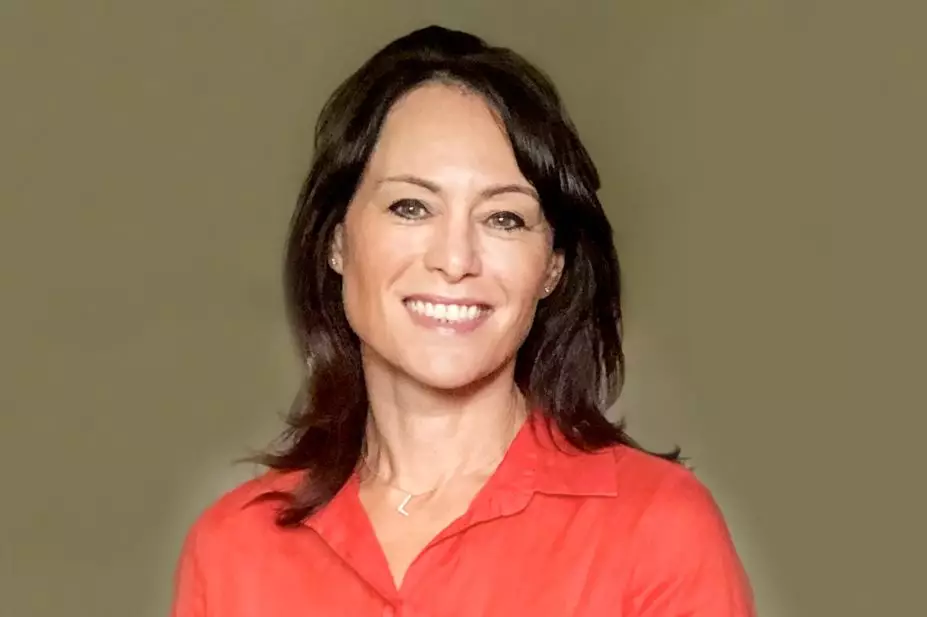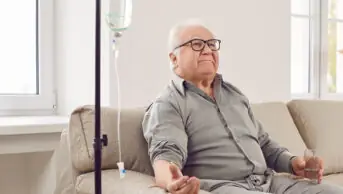
In September 2020, I became the first pharmacist to join the team of menopause experts at Newson Health Menopause and Wellbeing Centre. Together with a team of 21 GPs and 2 nurses, I offer one-on-one consultations, ensuring that women receive the best tailored advice and treatment during their perimenopause and menopause.
For many women, menopause can be an overwhelming, frightening, life-changing and isolating experience. Symptoms commonly start in the late 30s/early 40s — women do not expect it so young.
I became aware of the lack of quality advice offered to women while working in community pharmacy, and decided to join the British Menopause Society and focus my learning in this area, discovering missed symptoms that could be easily picked up in pharmacy. I followed my passion, created my ideal job and now I’m working with some of the best doctors in this field.
9.30 — start
I work remotely, seeing between six and eight women per clinic, with the back up of administration staff and contact with all of the team should there be any complex cases.
I log on to the Heydoc system, which provides a secure platform to store patient records and access to video calling. I say good morning to our team of administrators via a Teams chat and check there have been no last-minute changes to my schedule.
When patients book a consultation, they are asked to fill in a medical questionnaire and a modified Greene Climacteric Symptom chart. The chart lists 21 of the most common menopausal symptoms, which the patient will grade to help assess the severity of their symptoms and to help guide the consultation. In preparation for the clinic, I have already checked the medical form and symptom chart, made notes and looked up any unfamiliar medical conditions, so that I can check there will be no contraindications to treatment.
I familiarise myself with the notes, click a link to start the video, and we’re up and running.
10.00
My first patient is in her mid-40s and has a significant symptom score. She tells me that her GP has refused her hormone replacement therapy (HRT) as she had a thrombosis a few years ago, following an accident with immobility and no access to enoxaparin. She had blood tests and has no known thrombophilia. The perceived increased clotting risk associated with all HRT preparations is a common misconception among healthcare professionals, and we discuss how transdermal oestrogen has been shown to have no increased risk of clot, unlike oral oestrogen that undergoes first pass metabolism, causing a twofold increase in risk.
We discuss the benefits of HRT, including the protection offered against osteoporosis, cardiovascular disease, dementia, type 2 diabetes and colorectal cancer, before discussing the risks of breast cancer. She is surprised to learn how six times more women die of cardiovascular disease than they do of breast cancer, and that the increased risk in relation to HRT use is less than if she drank two units of alcohol a day or was overweight/obese. I highlight the safety difference between the older synthetic progestogens compared to the newer body identical micronised progesterone (Utrogestan; Besins Healthcare).
We talk about modifiable lifestyle factors, contraception, supplements (vitamin D in particular as per the guidelines), then we touch on symptoms of vaginal dryness and low libido, which we will discuss further at her follow up in three months’ time.
She is keen to try HRT and feels fully informed. I show her the different transdermal products, patches, gel and spray, and she decides she would like to try Oestrogel (Besins Healthcare) with Utrogestan.
Guidelines from the National Institute for Health and Care Excellence clearly state that women with vasomotor symptoms should be offered HRT first line and should have a follow up after three months.
At the end of each consultation, I enter my notes into the Heydoc system, along with my recommendations and patient choice, and I request a prescription by secure email. The prescriber checks my notes, along with the patient symptom chart, and any queries are discussed between us.
I also have a weekly meeting with a doctor who is mentoring me. We discuss the patients in advance according to their medical information and symptom chart.
10.45
There is a Teams message from one of the doctors asking if anyone knows if the progesterone in Cyclogest (L.D. Collins & Co.) is ‘micronised’. I know the answer and quickly respond that the progesterone is natural and body identical, but is not micronised as it is not an oral preparation and will be absorbed well from the vagina.
11.00
My next patient lives in Scotland and is already taking HRT. She is taking Kliofem (Novo Nordisk) and, despite her flushes and sweats improving, she still has symptoms, including low libido, poor concentration, tiredness and irritability.
I check that she is familiar with the risks and benefits of HRT and, as her GP only had a 10-minute consultation with her, I provide her with more information. We discuss how oral HRT, as well as having a small increased risk of clot, can also reduce libido as it increases the release of sex hormone binding globulin. I explain the benefits of transdermal body identical versus older synthetic formulations, such as Kliofem. As she is noticing a particular drop in her libido, concentration and energy, I take the opportunity to tell her about testosterone therapy, which can be very helpful.
Testosterone is not licensed for use in women in the UK, despite the evidence demonstrating its safety and effectiveness. Women actually make more testosterone than oestrogen before the menopause and may really need replacement therapy. I make sure to note on the system that I have explained the details and advised her that she will need her bloods monitored to ensure she stays in the female therapeutic range (if this is prescribed at a later date).
She would like to swap her Kliofem, which is 2mg estradiol and norethisterone, for a transdermal HRT. The British Menopause Society guidance suggests that 2mg is roughly equivalent to a 50mcg patch, which will be a good place to start. She will need Utrogestan or a hormonal intra-uterine device to protect her endometrium. Some areas in Scotland do not allow Utrogestan on the NHS, but she says she would be happy to continue to have it prescribed privately from Newson Health if her GP cannot prescribe it. We will see how she gets on with it at the follow up.
12.00
I have a 30-minute follow up appointment with my next patient, who was prescribed HRT three months ago. I can see from her symptoms score that she has improved significantly, but is still suffering from vulvovaginal atrophy, which she describes as severe vaginal dryness.
Of women with urogenital symptoms of menopause, 20% will need both systemic HRT and topical treatment. One year’s treatment with topical oestrogen is the equivalent of one dose of systemic HRT as so little of it is absorbed.
I recommend in my notes that she be prescribed vaginal estrogen in the form of Vagifem (Novo Nordisk) to use in addition to systemic HRT. Once started, it should be continued indefinitely, as symptoms may return when it is stopped.
12.30
I check my emails and have one from Louise Newson. I co-wrote a paper with her on ‘The role of HRT in the prevention and treatment of osteoporosis’ and she tells me it has been submitted for peer review.
14.00
I have an appointment with a woman in her 60s who is suffering with menopausal symptoms. Women aged over 60 years are normally considered too old for treatment; however, her last menstrual period was eight years ago meaning that she is still in the ‘window of opportunity’ for treatment. We agree to start low with one pump of Oestrogel daily plus Utrogestan 100mg at night.
16.00
An appointment with a woman who is a long-term sufferer of migraines. It has been getting much worse over the past year and coincides with her periods becoming lighter and less frequent, which is quite common.
Transdermal oestradiol is not contraindicated in migraine, even with aura, and we continue to discuss how she would be started on a low dose and increased very gradually to minimise the risk of triggering any more episodes.
19.00
Tonight we have a clinical team meeting via Zoom. We have a special surprise guest, who is a professor of obstetrics and gynaecology in Washington DC. This is an exciting opportunity to seek advice on any difficult clinical cases.
He mentions a new non-hormonal treatment for flushes and sweats that is under development, which looks promising.
Box 1: Interested in a similar role?
- Knowledge is vital, absorb as much information as possible. Familiarise yourself with the menopause symptom chart and
Easy HRT Prescribing Guide.
- Talk to women and understand the impact that their symptoms have on themselves, their work life and families, and understand what other factors can help to improve their wellbeing, such as modifying lifestyle (diet/weight/exercise/alcohol intake/stress management). Remember that women may not realise that their symptoms are owing to perimenopause/menopause and may have a hormonal intra-urterine device/oral contraceptive which would disguise the change in periods.
- Find out if there are any GPs locally who have a special interest in menopause; it could be extremely useful to work together. Gain experience in a specialised clinic where possible. Teamwork can be extremely helpful in some cases and it is invaluable to learn from the experts.
Additional resources:
- Newson Health Menopause & Wellbeing Centre
- Fourteen Fish — confidence in the menopause
- My Menopause Doctor
- The British Menopause Society
- The International Menopause Society
- Leaflet ‘Understanding Menopause’


